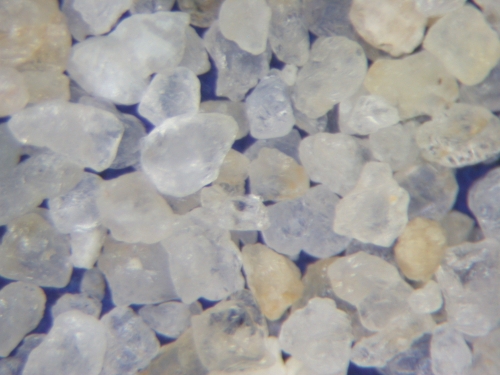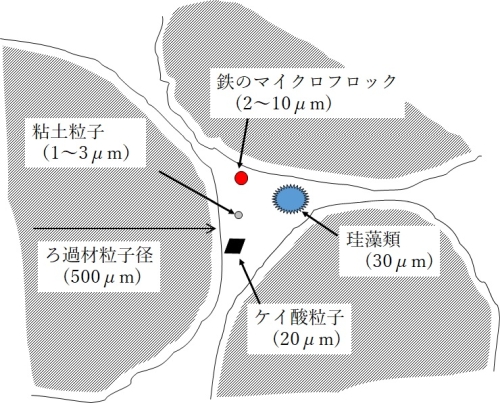Tech & Tools
Technical information
- HOME
- Tech & Tools
- Filtration (granular filtration)
Filtration (granular filtration)
Removing solids contained in water is generally called filtration, but using a granular filter material such as anthracite or filter sand is called granular filtration. This granular filtration can be divided into two types: slow sand filtration and rapid sand filtration.
● Slow sand filtration
Slow sand filtration is a gelatin-like biofiltration in which turbidity accumulates on the surface layer of the filter medium and algae and microorganisms grow by filtering at a very slow rate of 4 to 5 m per day. A membrane is formed, and this biofiltration membrane removes impurities from the water. Although the filtration rate is very slow, the turbidity is filtered by the biological filtration membrane, and the microorganisms oxidize and decompose and remove reducing inorganic substances such as iron and manganese, organic substances, and ammonia, so very clear water is used. You can get it. It is necessary to use sand with as fine a particle size as possible to improve the filtration effect of the filter material used for slow sand filtration, but if it is made too fine, it will easily become clogged and the number of scrapes will increase, so the Water Supply Facility Design Guideline 2000 Has standardized filtered sand with an effective diameter of 0.30 to 0.45 mm.

● Rapid sand filter
Rapid sand filtration is a very fast filtration rate of 120 to 720 m per day, and solids (mainly suspended substances) contained in water are screened with a filter medium, or adhered to or deposited on the filter medium. It is a method to remove by doing. Rapid filtration not only filters (squeezes) large particles with a fine sieve called a filter medium, but also electrically mediums the suspended substances contained in water on the surface of the filter medium by adding a flocculant or the like. It is removed by adhering it by mixing it or by precipitating it on the surface of the filter layer. Therefore, even very small particles of about 10 μm can be removed by filtration.

The filter material used for rapid sand filtration is generally filtered sand or ceramics, but if there is a lot of turbidity, multi-layer filtration with anthracite is used. In addition to removing suspended substances, rapid filtration also includes various types of filtration such as “iron / manganese removal by contact filtration”, “adsorption by activated carbon”, “ion exchange by ion exchange resin”, and “membrane filtration”. there is.
● About cleaning of filter media
In the case of rapid filtration, the solids adhering to the filter medium gradually accumulate inside the filter layer as the solids contained in the water are removed by the filter medium. The accumulated solid content may peel off due to the shearing force of the water flow, or it may not adhere to the filter material and leak into the filtered water. Therefore, it is necessary to clean the filter media at regular intervals. In general, backflow washing (backwashing), in which fresh water flows from the opposite direction of filtration, discharges solids captured from the filtration pond or filter. Surface cleaning or air cleaning may be added depending on the quality of the raw water, the chemicals to be injected, and long-term operation.
Backwashing has the most performance and economic effect by deploying 20 to 30% of the filter media. The purpose of backwashing is mainly to remove the turbidity in the upper part of the filter layer, but it also has the meaning of loosening the filter medium. Therefore, when filtering, regular backwashing is required.
Head Office
1-12-11 Tagawakita, Yodogawa-ku,Osaka
532-0021
Overseas Business Department
TEL +81-6-6301-6460
FAX +81-6-6308-3022




